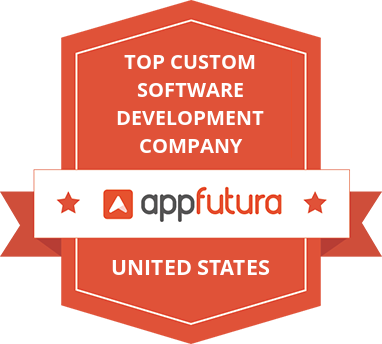Table of Contents
Today, there is a website for almost everything. Literally everything! No matter what the quality and designs are, organizations are pretty interested in developing a creative “WEBSITE” for their businesses. If not a website, there might be an app but still websites come as a priority.
From big names to small set-ups, having a website is now seen as a basic need of every business. Therefore, according to various research, the most common role of software developers now is none other than “Web Development”. Out of these web developers, “The Full Stack” developers come at the top of the list.
These developers hold knowledge of both, Back-end and Front end languages. They are the most in-demand developers right now even in 2024 as well.
So, today we are going to explore the world of “Front End Programming Languages” and see what are the best languages that can be used for it. We're going to learn about the special languages that these developers use.
These front end programming languages help create the beautiful and interactive parts of websites that you see and use every day.
Times When Front End Development Got All The Recognition
There was a time when the internet was more like a static library where you could see and read stuff but could not really do much else. This was called Web 1.0, a one-way street – you get information, but you don't give anything back.
Then came Web 2.0, and things got way better. Now, it's not just reading but you're part of the action! Facebook came and suddenly, you could chat, share photos, and do much more than just scroll. It was a dramatic shift from a static library to a bustling town square. Web 2.0 made teamwork easy.
Platforms like Google Drive let people work on documents together, no matter where they are. As the tech world changed from static to dynamic, front-end languages were the real heroes behind this massive revolution. HTML, CSS, and JavaScript, the trio of essential front-end languages, allowed users to not only get mere information but actively engage with it.
What Front-End Languages Actually Do?
When you visit a website, the first thing you notice is how it looks, right? The creative buttons you click, the colors that seize your eye, and how everything is placed neatly - all of that is due to the Front End programming languages that create user interface and user experience.
Have you ever seen a button that changes color when you hover your mouse over it? Or a page that slides down easily when you click a link? That's the real magic of Front End Development! These front end developers ensure the website feels interactive and creative at the same time. They use the right development language at the right time when it’s required.
Front-end developers use special tools and languages to create this amazing experience for the end users. Various front-end development languages are available that can be used to make a website even more enticing. Front end programming is mostly about the design of the slides, swings, and all the technical stuff you see along the website that contributes to UI/UX.
Front-End Development Vs Back-End Development
Front-end development and back-end development are two essential parts of creating a website or an application. The difference between backend and frontend languages is quite basic.

- Front end development focuses on all the visible areas, user interface, and user experience. It involves designing the layout, choosing colors, creating buttons, and making sure everything looks nice and pleasing. It's like creating the face of the website and deciding how it should visually look.
- On the other hand, back end development deals with behind-the-scenes work. It includes managing databases and ensuring that data is processed correctly. It's the foundation and inner workings of a website, making sure everything is stable and functions smoothly. Back-end developers work on the logic and functionality that enable the front end to operate seamlessly.
- In summary, front-end development focuses on the user experience, while back-end development deals with the server, database, and application logic. Both are vital for creating a well-functioning website or application. Each plays a separate but equally important role in the whole development process.
Top Eight Trendiest Front End Development Languages

When it comes to creating the look and feel of websites or web applications, there are Eight front-end development programming languages that are currently all the rage. These languages are like special tools that developers use to design how websites appear on your computer or mobile. They help in making everything look neat, attractive, and easy to use. So, here are the details of the best front end languages and frameworks.
-
HTML( HyperText Markup Language)

HTML, or HyperText Markup Language, is like the skeleton of a web page. If development is a human body - HTML has bones that give it structure. HTML provides the structure for a web page and is mainly used to create content for the web page.
It uses special codes called "tags" to define different parts of a page, like headings, paragraphs, and links. These tags tell web browsers how to display the content. So, when you visit a website, your browser reads the HTML and shows you everything in the right place.
For example, if you want to create a heading on a webpage, you'd use an HTML tag like <h1>. It's like telling the browser, "Hey, this part is really important and should be displayed as a big title." So, HTML is the language that helps build the foundation of every webpage you see on the internet!
Characteristics of HTML
✅ Building Blocks: HTML uses special codes called tags to create the basic structure of a webpage. It's like putting together Lego blocks to make something cool!
✅ Works Everywhere: HTML is like a universal language for the web. It doesn't matter if you're using a computer, tablet, or phone, HTML makes sure websites look good on all of them.
✅ Links: With HTML, you can create clickable links that take you to other pages.
✅ Pictures and Sounds: HTML lets us add images, audio, and videos to web pages.
✅ Helps Everyone: HTML can be used to make web pages that are easy for everyone to use, including people with no special knowledge. It's all about being inclusive!
✅ A Web Standard: HTML is like a rulebook that everyone follows when creating web pages. This means no matter where you go on the internet, things work in a similar way.
-
CSS

HTML and CSS are front end technologies. While HTML creates the structure of a webpage, CSS steps in to make it look really nice and clean! It's all about colors, fonts, and arranging things on the web page so they look just right. Adding additional special features to the web pages, CSS does that!
CSS works wonders to transform a plain webpage into something creative. For example, if you want to change the color of text on a webpage from black to blue, CSS is the tool you use. It also helps in arranging elements, like making sure pictures are in the right place and buttons are the perfect size. So, CSS is like the expert artist who adds all the beautiful details to a webpage!
CSS doesn't just stop at colors and fonts, it's also a master of spacing and borders. You can control the gaps between elements, enhancing the visual appeal of your page. Additionally, CSS allows you to add borders to elements, providing a sense of order.
To give your webpage that extra "wow" factor, CSS can create animations and special effects. Elements can gracefully fade in, slide across the screen, or transform when users hover their cursors over them. These animations add interactivity, making the browsing experience more enjoyable.
Characteristics of CSS
✅ Color and Style Control: CSS lets you pick colors and styles for text, backgrounds, and more.
✅ Font Customization: You can change the look of text with different fonts, sizes, and effects.
✅ Layout Arrangement: CSS helps you organize elements neatly
✅ Spacing and Borders: It controls the gaps between elements and adds borders for a cleaner look.
✅ Fun Animations: CSS creates great animations and effects to make your webpage more exciting.
✅ Responsive Design: Your webpage looks good on all devices, from small phones to big screens.
✅ Separation of Style: CSS keeps the design separate from the content for easy changes.
-
JavaScript

JavaScript is the most dynamic player in the web development world. As one of the most widely used front-end programming languages, it genuinely breathes life into otherwise static web pages. In other words, JavaScript is the true artist who adds interactivity and makes webpages dance with commands.
JavaScript front end is a powerful language, you can create various elements that respond to user actions using it. From simple tasks like making buttons change color when you hover over them to complex applications like online games or real-time chat, JavaScript is the go-to choice. It's like adding magic to your webpage, enabling it to react to the user's every click and input.
What's even more fantastic about JavaScript is that it runs directly in your web browser, so there's no need for additional installations or plugins. The scripting language behind the scenes can manipulate the Document Object Model (DOM) – a fancy term for the structure of your web page. This means you can change or even create new elements on your webpage in real time. This gives you complete control over your user's experience.
Characteristics of JavaScript
✅ Versatility and Universality: JavaScript is like a universal language for the web. It works on almost every web browser and device, making it a versatile choice for developers.
✅ Interactivity: It lets you add interactive features, such as buttons that respond to clicks, forms that validate user input, and games that react to your actions.
✅ Runs in Browsers: JavaScript runs right in your web browser, so you don't need extra software.
✅ Event-driven: JavaScript listens for events like clicks and keystrokes. When it hears an event, it can trigger actions or responses.
✅ User-Friendly: JavaScript is a friendly language for beginners. It's relatively easy to learn, which makes it a great starting point for those getting into web development.

-
React.Js
What Makes Developers Rely On It?
Owing to its gift for creating fast, efficient, and easily expandable web applications, React has become a go-to option for many. From big companies to fresh startups, countless web applications now rely on React. All this is because of the numerous perks it offers.
Also, the React.Js community is renowned for its vibrancy and strong support system. Within this dynamic ecosystem, many third-party libraries and tools seamlessly integrate with React.Js, contributing to its widespread adoption in web and mobile development. This collaborative environment encourages innovation.
Characteristics of React.js
✅ React creates fast and effective websites.
✅ It's flexible, making it suitable for both big and small projects.
✅ React's friendly community provides great support and effective tools.
✅ The component-based structure of React makes it easy to add new features.
✅ Many developers prefer React for its simplicity and powerful capabilities.
-
Next.Js

What Factors Make It A Popular Choice?
The answer is that Next.js is quite a popular framework among developers because it has a unique mix of power, freedom, and developer friendliness. Any front-end developer who is interested in building server-rendered React applications could surely benefit from learning Next.js. As for developers, it is always nice to be aware of emerging technologies.
Next.js makes apps that load quickly, are simple to use, and give a perfect user experience. These features make Next.js a good platform for app development.
Characteristics of Next js
✅ Next.js is a popular choice for developers because it combines power, freedom, and friendliness.
✅ It's great for front-end developers building server-rendered React apps.
✅ Learning Next.js is beneficial for developers to keep up with the latest technologies.
✅ Next.js makes apps load faster, ensuring a great user experience.
✅ It's a good platform for app development due to its simplicity and user-friendly features.
-
Express.Js

What Is The Role Of Express.Js In Front End Development
Here comes the one and only Express.js. Since Express is built on top of Node, it does add more features to apps. If Node.js is in the middle, then Express.js swirls around it. It was genuinely built to work with Node.js. Therefore, Express.js is a framework for Node.js, thus you'll need Node.js to use it anyway.
Express.js is also an essential component of web development because it offers a well-organized framework that is built on top of Node.js. This arrangement makes it simple for developers to create apps that are both powerful and scalable.
In the context of front-end development, Express.js is pretty crucial as it allows the front end to communicate with the back end. So, while front-end technologies like HTML, CSS, and JavaScript create what users see in their browsers, Express.js helps make sure that when users interact with the website, the back end responds correctly, handling data and requests efficiently.
Characteristics of Express.js
✅ Express.js is a web application framework for Node.js, simplifying server-side development.
✅ It enables the creation of both single-page and multi page web applications.
✅ Express.js provides a structured way to define routes and handle HTTP requests.
✅ The framework excels in building RESTful APIs, facilitating seamless communication between the front end and back end.
✅ Express.js is known for its vibrant community, supporting a diverse range of third-party libraries and tools.
-
Angular

Angular is a special tool that helps create the parts you directly interact with on a website. This language is more like a master architect who designs how everything looks and works on the front end of a website.
One of Angular's best parts is its ability to handle plenty of different tasks at once. Angular can manage various elements like buttons, forms, images, and more, and make sure they all fit together perfectly on a webpage.
Normally, when you use a website, clicking on buttons takes you to different pages. But with Angular, it's like having a super fast way to change what you see on the screen without waiting for a new page to load. It's more like having a really swift magic wand for websites!
What makes Angular stand out among other front end languages is its gift for organization. It keeps all the pieces of a site in order, making it easy for developers to find what they need. With its help, developers can add new features or make changes without getting lost in a sea of other codes. So, even if you're not a tech expert, you can see how Angular makes websites look great and work smoothly!
Characteristics of Angular
✅ Modular Structure: Angular is a frontend coding language that breaks the code into smaller, manageable pieces called modules.
✅ Two-Way Data Binding: This feature ensures that any changes made in the user interface instantly update the application objects and vice versa.
✅ Dependency Injection: Angular manages how different pieces of code interact by injecting the necessary dependencies.
✅ Cross-Platform Compatibility: Applications built with Angular can run on various platforms, including web browsers, mobile devices, and even desktop applications.
✅ Extensive Community Support: There's a large community of developers who use Angular, which means there are plenty of resources, tutorials, and help available.
-
Vue

Vue is the new rising star in the world of front end programming languages. It's a progressive JavaScript framework that focuses on making user interface creation really a breeze. With its emphasis on simplicity, flexibility, and easy integration, Vue enables front end developers to create dynamic web applications. Owing to its intuitive design and gentle learning curve, Vue has become the new favorite among developers and is still managing to gain more recognition.
A big advantage of Vue is its ever-expanding ecosystem and pretty supportive community. This ensures a wealth of resources, plugins, and third-party components. Vue also boasts a lightweight runtime that optimizes performance by efficiently updating only the components affected by data changes.
Developers hugely benefit from Vue's official developer tools, which help them debugging and optimize the Vue applications. These tools provide real-time insights into the application's state and performance.
For a seasoned front end programming language developer, Vue offers an inviting environment for developing responsive user interfaces. Its perfect blend of simplicity, flexibility, and community support positions it as an attractive choice for projects in the ever-changing landscape of web development.
Characteristics of Vue:
✅ Easy Learning Curve: Vue boasts a gentle learning curve which makes it a perfect choice for developers at all levels.
✅ Versatility and Flexibility: Vue adapts to projects of all sizes, from small components to robust applications. Its component-based architecture promotes reusability and modularity with easy maintenance.
✅ Performance Optimization: Vue prioritizes performance through smart features like virtual DOM implementation. The reactivity system tracks state changes efficiently while minimizing unnecessary re-rendering.
✅ Reactive Data Binding: Vue's reactivity system allows for automatic tracking of changes in the application's state. It lets front end language developers have real-time updates too without extra hiccups. Moreover, this feature enhances efficiency and responsiveness which is a win-win.
✅ Component-Based Architecture: Vue adopts a component-based approach, breaking down the user interface into modular and reusable components. This not only promotes code organization but also facilitates the creation of complex UIs with ease.
✅ Progressive Framework: Vue is made as a progressive framework, enabling developers to adopt and use its features. So, if a developer is working on a small project or a large-scale application, Vue adapts exactly to their needs.
Conclusion
Frontend development is the creative art of making websites look amazing and work flawlessly. We've explored some top front end languages & frameworks like HTML, CSS, JavaScript, and Angular, each playing a special role in developing the websites we use every day.
Remember! These languages are like special tools in a developer's toolkit, helping them build the web pages we interact with. So, the next time you visit any website, you'll have a bit of a peek into the real game happening behind the scenes. You’ll know what the front end web is all about and you’ll be more productive in your development projects.
Table of Contents
Today, there is a website for almost everything. Literally everything! No matter what the quality and designs are, organizations are pretty interested in developing a creative “WEBSITE” for their businesses. If not a website, there might be an app but still websites come as a priority.
From big names to small set-ups, having a website is now seen as a basic need of every business. Therefore, according to various research, the most common role of software developers now is none other than “Web Development”. Out of these web developers, “The Full Stack” developers come at the top of the list.
These developers hold knowledge of both, Back-end and Front end languages. They are the most in-demand developers right now even in 2024 as well.
So, today we are going to explore the world of “Front End Programming Languages” and see what are the best languages that can be used for it. We're going to learn about the special languages that these developers use.
These front end programming languages help create the beautiful and interactive parts of websites that you see and use every day.
Times When Front End Development Got All The Recognition
There was a time when the internet was more like a static library where you could see and read stuff but could not really do much else. This was called Web 1.0, a one-way street – you get information, but you don't give anything back.
Then came Web 2.0, and things got way better. Now, it's not just reading but you're part of the action! Facebook came and suddenly, you could chat, share photos, and do much more than just scroll. It was a dramatic shift from a static library to a bustling town square. Web 2.0 made teamwork easy.
Platforms like Google Drive let people work on documents together, no matter where they are. As the tech world changed from static to dynamic, front-end languages were the real heroes behind this massive revolution. HTML, CSS, and JavaScript, the trio of essential front-end languages, allowed users to not only get mere information but actively engage with it.
What Front-End Languages Actually Do?
When you visit a website, the first thing you notice is how it looks, right? The creative buttons you click, the colors that seize your eye, and how everything is placed neatly - all of that is due to the Front End programming languages that create user interface and user experience.
Have you ever seen a button that changes color when you hover your mouse over it? Or a page that slides down easily when you click a link? That's the real magic of Front End Development! These front end developers ensure the website feels interactive and creative at the same time. They use the right development language at the right time when it’s required.
Front-end developers use special tools and languages to create this amazing experience for the end users. Various front-end development languages are available that can be used to make a website even more enticing. Front end programming is mostly about the design of the slides, swings, and all the technical stuff you see along the website that contributes to UI/UX.
Front-End Development Vs Back-End Development
Front-end development and back-end development are two essential parts of creating a website or an application. The difference between backend and frontend languages is quite basic.

- Front end development focuses on all the visible areas, user interface, and user experience. It involves designing the layout, choosing colors, creating buttons, and making sure everything looks nice and pleasing. It's like creating the face of the website and deciding how it should visually look.
- On the other hand, back end development deals with behind-the-scenes work. It includes managing databases and ensuring that data is processed correctly. It's the foundation and inner workings of a website, making sure everything is stable and functions smoothly. Back-end developers work on the logic and functionality that enable the front end to operate seamlessly.
- In summary, front-end development focuses on the user experience, while back-end development deals with the server, database, and application logic. Both are vital for creating a well-functioning website or application. Each plays a separate but equally important role in the whole development process.
Top Eight Trendiest Front End Development Languages

When it comes to creating the look and feel of websites or web applications, there are Eight front-end development programming languages that are currently all the rage. These languages are like special tools that developers use to design how websites appear on your computer or mobile. They help in making everything look neat, attractive, and easy to use. So, here are the details of the best front end languages and frameworks.
-
HTML( HyperText Markup Language)

HTML, or HyperText Markup Language, is like the skeleton of a web page. If development is a human body - HTML has bones that give it structure. HTML provides the structure for a web page and is mainly used to create content for the web page.
It uses special codes called "tags" to define different parts of a page, like headings, paragraphs, and links. These tags tell web browsers how to display the content. So, when you visit a website, your browser reads the HTML and shows you everything in the right place.
For example, if you want to create a heading on a webpage, you'd use an HTML tag like <h1>. It's like telling the browser, "Hey, this part is really important and should be displayed as a big title." So, HTML is the language that helps build the foundation of every webpage you see on the internet!
Characteristics of HTML
✅ Building Blocks: HTML uses special codes called tags to create the basic structure of a webpage. It's like putting together Lego blocks to make something cool!
✅ Works Everywhere: HTML is like a universal language for the web. It doesn't matter if you're using a computer, tablet, or phone, HTML makes sure websites look good on all of them.
✅ Links: With HTML, you can create clickable links that take you to other pages.
✅ Pictures and Sounds: HTML lets us add images, audio, and videos to web pages.
✅ Helps Everyone: HTML can be used to make web pages that are easy for everyone to use, including people with no special knowledge. It's all about being inclusive!
✅ A Web Standard: HTML is like a rulebook that everyone follows when creating web pages. This means no matter where you go on the internet, things work in a similar way.
-
CSS

HTML and CSS are front end technologies. While HTML creates the structure of a webpage, CSS steps in to make it look really nice and clean! It's all about colors, fonts, and arranging things on the web page so they look just right. Adding additional special features to the web pages, CSS does that!
CSS works wonders to transform a plain webpage into something creative. For example, if you want to change the color of text on a webpage from black to blue, CSS is the tool you use. It also helps in arranging elements, like making sure pictures are in the right place and buttons are the perfect size. So, CSS is like the expert artist who adds all the beautiful details to a webpage!
CSS doesn't just stop at colors and fonts, it's also a master of spacing and borders. You can control the gaps between elements, enhancing the visual appeal of your page. Additionally, CSS allows you to add borders to elements, providing a sense of order.
To give your webpage that extra "wow" factor, CSS can create animations and special effects. Elements can gracefully fade in, slide across the screen, or transform when users hover their cursors over them. These animations add interactivity, making the browsing experience more enjoyable.
Characteristics of CSS
✅ Color and Style Control: CSS lets you pick colors and styles for text, backgrounds, and more.
✅ Font Customization: You can change the look of text with different fonts, sizes, and effects.
✅ Layout Arrangement: CSS helps you organize elements neatly
✅ Spacing and Borders: It controls the gaps between elements and adds borders for a cleaner look.
✅ Fun Animations: CSS creates great animations and effects to make your webpage more exciting.
✅ Responsive Design: Your webpage looks good on all devices, from small phones to big screens.
✅ Separation of Style: CSS keeps the design separate from the content for easy changes.
-
JavaScript

JavaScript is the most dynamic player in the web development world. As one of the most widely used front-end programming languages, it genuinely breathes life into otherwise static web pages. In other words, JavaScript is the true artist who adds interactivity and makes webpages dance with commands.
JavaScript front end is a powerful language, you can create various elements that respond to user actions using it. From simple tasks like making buttons change color when you hover over them to complex applications like online games or real-time chat, JavaScript is the go-to choice. It's like adding magic to your webpage, enabling it to react to the user's every click and input.
What's even more fantastic about JavaScript is that it runs directly in your web browser, so there's no need for additional installations or plugins. The scripting language behind the scenes can manipulate the Document Object Model (DOM) – a fancy term for the structure of your web page. This means you can change or even create new elements on your webpage in real time. This gives you complete control over your user's experience.
Characteristics of JavaScript
✅ Versatility and Universality: JavaScript is like a universal language for the web. It works on almost every web browser and device, making it a versatile choice for developers.
✅ Interactivity: It lets you add interactive features, such as buttons that respond to clicks, forms that validate user input, and games that react to your actions.
✅ Runs in Browsers: JavaScript runs right in your web browser, so you don't need extra software.
✅ Event-driven: JavaScript listens for events like clicks and keystrokes. When it hears an event, it can trigger actions or responses.
✅ User-Friendly: JavaScript is a friendly language for beginners. It's relatively easy to learn, which makes it a great starting point for those getting into web development.

-
React.Js
What Makes Developers Rely On It?
Owing to its gift for creating fast, efficient, and easily expandable web applications, React has become a go-to option for many. From big companies to fresh startups, countless web applications now rely on React. All this is because of the numerous perks it offers.
Also, the React.Js community is renowned for its vibrancy and strong support system. Within this dynamic ecosystem, many third-party libraries and tools seamlessly integrate with React.Js, contributing to its widespread adoption in web and mobile development. This collaborative environment encourages innovation.
Characteristics of React.js
✅ React creates fast and effective websites.
✅ It's flexible, making it suitable for both big and small projects.
✅ React's friendly community provides great support and effective tools.
✅ The component-based structure of React makes it easy to add new features.
✅ Many developers prefer React for its simplicity and powerful capabilities.
-
Next.Js

What Factors Make It A Popular Choice?
The answer is that Next.js is quite a popular framework among developers because it has a unique mix of power, freedom, and developer friendliness. Any front-end developer who is interested in building server-rendered React applications could surely benefit from learning Next.js. As for developers, it is always nice to be aware of emerging technologies.
Next.js makes apps that load quickly, are simple to use, and give a perfect user experience. These features make Next.js a good platform for app development.
Characteristics of Next js
✅ Next.js is a popular choice for developers because it combines power, freedom, and friendliness.
✅ It's great for front-end developers building server-rendered React apps.
✅ Learning Next.js is beneficial for developers to keep up with the latest technologies.
✅ Next.js makes apps load faster, ensuring a great user experience.
✅ It's a good platform for app development due to its simplicity and user-friendly features.
-
Express.Js

What Is The Role Of Express.Js In Front End Development
Here comes the one and only Express.js. Since Express is built on top of Node, it does add more features to apps. If Node.js is in the middle, then Express.js swirls around it. It was genuinely built to work with Node.js. Therefore, Express.js is a framework for Node.js, thus you'll need Node.js to use it anyway.
Express.js is also an essential component of web development because it offers a well-organized framework that is built on top of Node.js. This arrangement makes it simple for developers to create apps that are both powerful and scalable.
In the context of front-end development, Express.js is pretty crucial as it allows the front end to communicate with the back end. So, while front-end technologies like HTML, CSS, and JavaScript create what users see in their browsers, Express.js helps make sure that when users interact with the website, the back end responds correctly, handling data and requests efficiently.
Characteristics of Express.js
✅ Express.js is a web application framework for Node.js, simplifying server-side development.
✅ It enables the creation of both single-page and multi page web applications.
✅ Express.js provides a structured way to define routes and handle HTTP requests.
✅ The framework excels in building RESTful APIs, facilitating seamless communication between the front end and back end.
✅ Express.js is known for its vibrant community, supporting a diverse range of third-party libraries and tools.
-
Angular

Angular is a special tool that helps create the parts you directly interact with on a website. This language is more like a master architect who designs how everything looks and works on the front end of a website.
One of Angular's best parts is its ability to handle plenty of different tasks at once. Angular can manage various elements like buttons, forms, images, and more, and make sure they all fit together perfectly on a webpage.
Normally, when you use a website, clicking on buttons takes you to different pages. But with Angular, it's like having a super fast way to change what you see on the screen without waiting for a new page to load. It's more like having a really swift magic wand for websites!
What makes Angular stand out among other front end languages is its gift for organization. It keeps all the pieces of a site in order, making it easy for developers to find what they need. With its help, developers can add new features or make changes without getting lost in a sea of other codes. So, even if you're not a tech expert, you can see how Angular makes websites look great and work smoothly!
Characteristics of Angular
✅ Modular Structure: Angular is a frontend coding language that breaks the code into smaller, manageable pieces called modules.
✅ Two-Way Data Binding: This feature ensures that any changes made in the user interface instantly update the application objects and vice versa.
✅ Dependency Injection: Angular manages how different pieces of code interact by injecting the necessary dependencies.
✅ Cross-Platform Compatibility: Applications built with Angular can run on various platforms, including web browsers, mobile devices, and even desktop applications.
✅ Extensive Community Support: There's a large community of developers who use Angular, which means there are plenty of resources, tutorials, and help available.
-
Vue

Vue is the new rising star in the world of front end programming languages. It's a progressive JavaScript framework that focuses on making user interface creation really a breeze. With its emphasis on simplicity, flexibility, and easy integration, Vue enables front end developers to create dynamic web applications. Owing to its intuitive design and gentle learning curve, Vue has become the new favorite among developers and is still managing to gain more recognition.
A big advantage of Vue is its ever-expanding ecosystem and pretty supportive community. This ensures a wealth of resources, plugins, and third-party components. Vue also boasts a lightweight runtime that optimizes performance by efficiently updating only the components affected by data changes.
Developers hugely benefit from Vue's official developer tools, which help them debugging and optimize the Vue applications. These tools provide real-time insights into the application's state and performance.
For a seasoned front end programming language developer, Vue offers an inviting environment for developing responsive user interfaces. Its perfect blend of simplicity, flexibility, and community support positions it as an attractive choice for projects in the ever-changing landscape of web development.
Characteristics of Vue:
✅ Easy Learning Curve: Vue boasts a gentle learning curve which makes it a perfect choice for developers at all levels.
✅ Versatility and Flexibility: Vue adapts to projects of all sizes, from small components to robust applications. Its component-based architecture promotes reusability and modularity with easy maintenance.
✅ Performance Optimization: Vue prioritizes performance through smart features like virtual DOM implementation. The reactivity system tracks state changes efficiently while minimizing unnecessary re-rendering.
✅ Reactive Data Binding: Vue's reactivity system allows for automatic tracking of changes in the application's state. It lets front end language developers have real-time updates too without extra hiccups. Moreover, this feature enhances efficiency and responsiveness which is a win-win.
✅ Component-Based Architecture: Vue adopts a component-based approach, breaking down the user interface into modular and reusable components. This not only promotes code organization but also facilitates the creation of complex UIs with ease.
✅ Progressive Framework: Vue is made as a progressive framework, enabling developers to adopt and use its features. So, if a developer is working on a small project or a large-scale application, Vue adapts exactly to their needs.
Conclusion
Frontend development is the creative art of making websites look amazing and work flawlessly. We've explored some top front end languages & frameworks like HTML, CSS, JavaScript, and Angular, each playing a special role in developing the websites we use every day.
Remember! These languages are like special tools in a developer's toolkit, helping them build the web pages we interact with. So, the next time you visit any website, you'll have a bit of a peek into the real game happening behind the scenes. You’ll know what the front end web is all about and you’ll be more productive in your development projects.

Written by :
Oliver Yale
Oliver Yale is a Head of Product Development at InvoTeams







